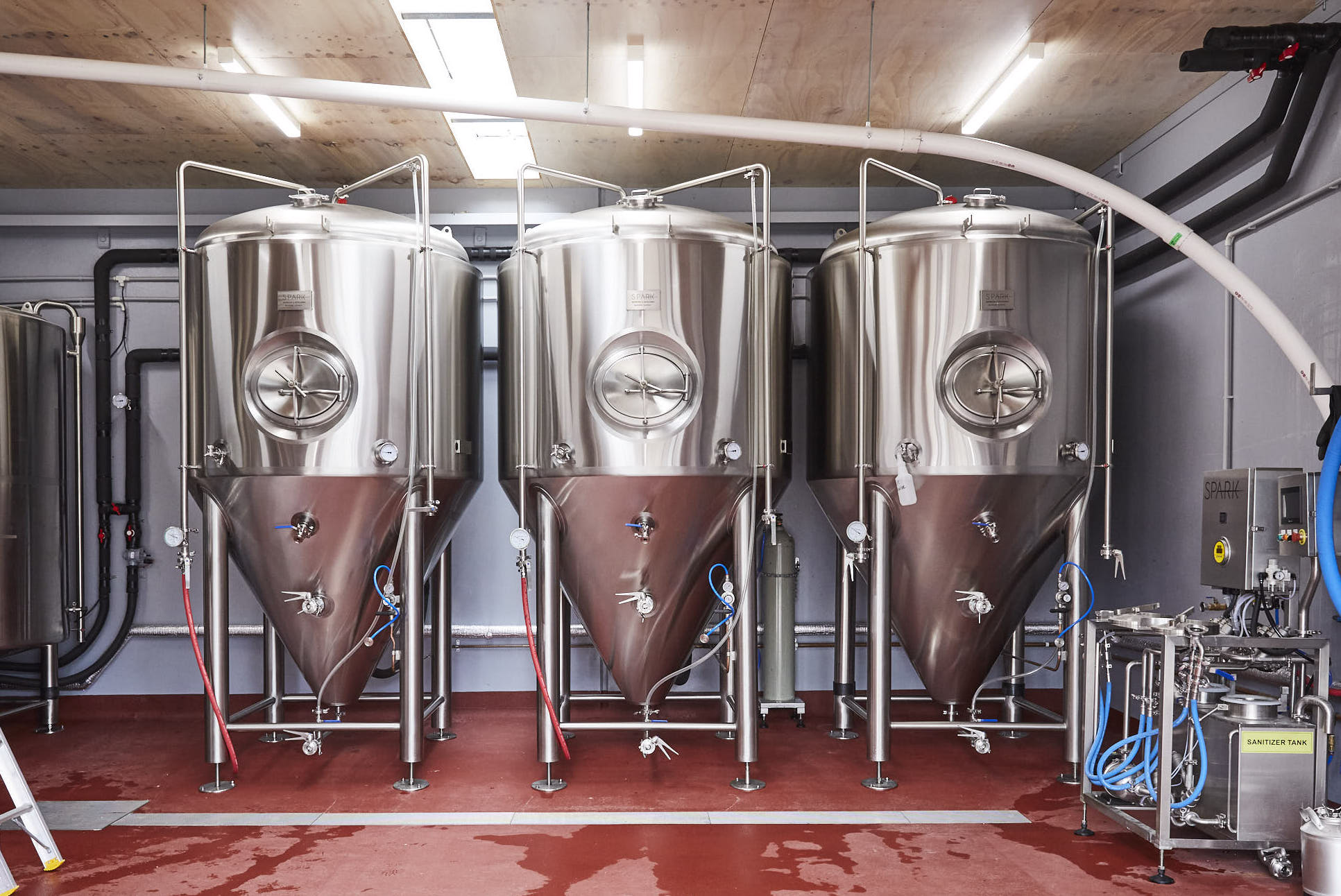
How to plan brewery builds

A common question we hear when people are trying to plan their brewery is, how many tanks do I actually need?
The answer is relatively simple and also involves some business planning.
The amount of fermentation space you require should be determined by your business plan. It is common for a small to medium sized brewpub to break even at around 8-10kegs per week of sales over the bar. Anything over that and a typical small brewpub with 80 patron licence is likely to break into profitability.
A simple spreadsheet template will allow you to understand your own specific break even sales volume.
Many small brewpubs comfortably do 15-20 kegs per week and it is not uncommon to sell 30 – 50 for a successful community brewpub. It’s always better to plan for success by ensuring that your utility and layout infrastructure can allow for inexpensive and easy expansion.
Key considerations are:
The brew cycle:
The brew cycle is the time in weeks or hours it takes to brew a beer.
A standard ale takes around two weeks to brew, condition and carbonate. In other words it will take up your uni tank for two weeks before being packaged.
You can expect around 10% of loss from your knockout volume to finished beer. Allowing for 30% excess capacity is the norm – life is never 100% efficient in practice.
Let’s work with a brew cycle of two weeks, typical for ales.
Calculating the number of fermenters you need:
First you need to decide how many kegs per week you need to sell, this is determined through business planning.
Once you know how many kegs a week you need to supply then you can apply the following:
The amount of standard ale kegs with a brew cycle of two weeks is equal to the fermenter volume in hectolitres. E.g. One 10hl Fermentation Vessel (Uni-tankl) can supply ten kegs per week.
Therefore if your business plan calls for 30 kegs per week then you will need 3 x 10hl FVs.
Additionally you want to allow 30 percent extra space to achieve your supply volumes, which is an additional 10hl FV.
After you determine how many FVs you need you can add in bright tanks which do not alter your supply volumes but free up your fermentation space to ensure strict brew cycle adherence.
(The maths. 10hl = 1000l, 1000l/50l = 20kegs divide by you brew cycle of 2 = 10 kegs per week)
What size tanks should I choose?
While the best bang for your buck is a single huge fermenter, most breweries want a wide range of beers on tap and opt for a combination of single and double batch tanks. It isn’t uncommon for the most popular two beers at a venue to account for 60-80% of sales, so covering these two efficiently with double batching and serving tanks reduces the number of brewdays and kegs significantly. The optimal balance can be struck between efficiency and flexibility, to deliver the business plan.
Why would I select bright tanks:
- Free up fermentation space
- Condition beer for an extended period of time without compromising on supply
- Serve directly from the bright tank to minimise kegging and labour costs
- Allows for greater clarity and transfer off yeast, any yeast remaining settles in the dished bottom and will not be carried into the final draught, kegged or packaged beer.
- Do not require caustic cleaning as often as uni tanks
Why choose Spark:
There are many questions that may come up when you are planning your brewery build. Spark has installed 50 breweries Australia wide and have all the answers. We work closely to support your decisions before, during and long after a project is complete.
We don’t just supply equipment, we deliver profitable operating businesses and every project gets an engineer, project manager and brewer to ensure high quality beer and speed to profitability.
If you want a long term partner not just an equipment supplier – get in touch.



